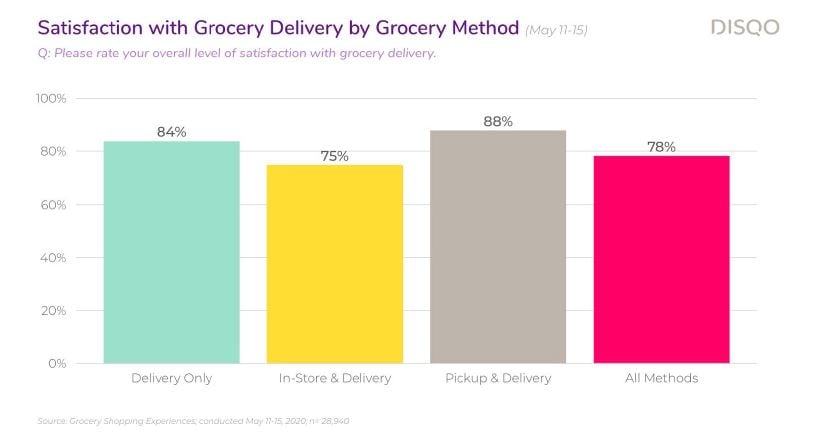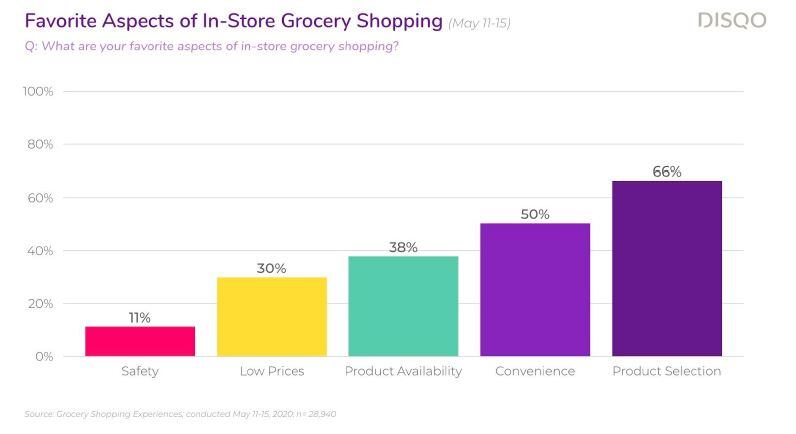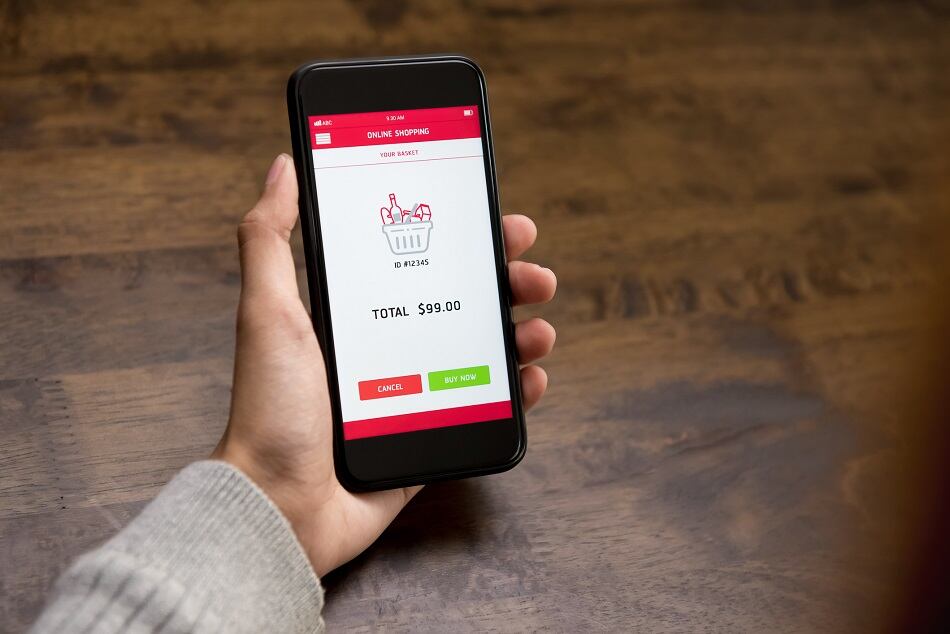In its Grocery Shopping Experience Survey, which garnered 28,940 responses from May 11 through May 15, 2020, DISQO found that 85.7% of respondents reported acquiring their groceries via in-store shopping, compared to 26.7% of people who used grocery delivery or pickup options.
About 39% reported doing less in-store shopping compared with two months ago and 26% reported purchasing more bulk items. Another 16% said they were ordering more grocery delivery and 15% were opting for more curbside pickup orders.
Despite an uptick in online grocery and curbside pickup, the majority of respondents (86.4%) said they still shopped through one channel with 73.3% choosing in-store shopping only, grocery pickup (7.4%), or delivery (5.7%).
"This spring, alternative shopping methods became a necessity for many shoppers. While many will undoubtedly return to their preferred retailers and brands as stores reopen and products are back in stock, the exposure to new ways to shop and new products will have a lasting impact," Barbie Koelker, VP of marketing at DISQO, told FoodNavigator-USA.
"While we are seeing some behaviors retreat from peak shifts, there is undoubtedly a residual shift in how people shop, and the path to purchase — across categories — is more digital than ever before."
Retailers, therefore, should be prioritizing an omnichannel shopping experience for consumers, said Koelker.
Customer satisfaction ranks higher for pickup and delivery than in-store grocery shopping
Among people who have recently used all three grocery shopping methods (in-store, pick-up, and delivery), online ordering for store pickup generated the highest level of shopper satisfaction.

“Interestingly, among those who only shopped online for delivery and pickup, delivery provided a slightly higher level of shopper satisfaction (with 79.7% being satisfied with delivery compared to 78.1% for pickup),” noted DISQO in its report.
While 71% reported satisfaction with in-store grocery shopping, 81% and 80% reported satisfaction with grocery pickup and delivery, respectively.
Shoppers who opted for in-store & pickup, and pickup only, were most likely to order directly through the store (91% and 85% respectively).
Those who ordered delivery only, and in-store & delivery, were most likely to use a third-party service (46% and 42% respectively). Among the shoppers using online grocery services, 68% ordered their groceries directly through the store, while 23% ordered through a third-party service such as Instacart or Shipt, according to the survey.
In terms of repeat shopping behaviors, DISQO found that roughly 94% of previous in-store shoppers planned to purchase groceries in-store again in the next two weeks. Of those who had ordered pickup or delivery, 79% planned to do so again.
Shoppers who had experienced all methods would likely opt for pickup because of product selection (21%), low prices (18%), and product availability (16%), according to DISQO.
"In-store grocery shopping remains the preferred method for most shoppers. However, given the satisfaction levels we are seeing among people who have explored other grocery shopping methods, we expect to see sustained growth in both grocery delivery and store pickup," said Koelker.
"When looking at how people plan to acquire their groceries in the coming weeks, those who had previously ordered groceries online reported less interest in visiting a store than those who had only engaged in in-store shopping. This suggests that the online grocery shopping experience is providing more appeal than shopping in-store, at least for some."
Favorite aspects of in-store grocery shopping
According to DISQO’s consumer survey, the top reasons people prefer buying groceries in-store is due to product selection (66%) and convenience (51%). Other aspects include product availability (38%) and low prices (30%).
However, perceived safety for in-store shopping remains low (11%).

“All types of shoppers appreciate the product selection most when in-store shopping. Those who shop in-store only are most likely to value the convenience (51%) of in-store shopping, while shoppers who opt for every method value the safety of in-store grocery shopping (28%). Still, shoppers who opt for in-store & delivery methods are most likely to enjoy in-store shopping due to low prices (33%) and product availability (48%),” noted DISQO.




